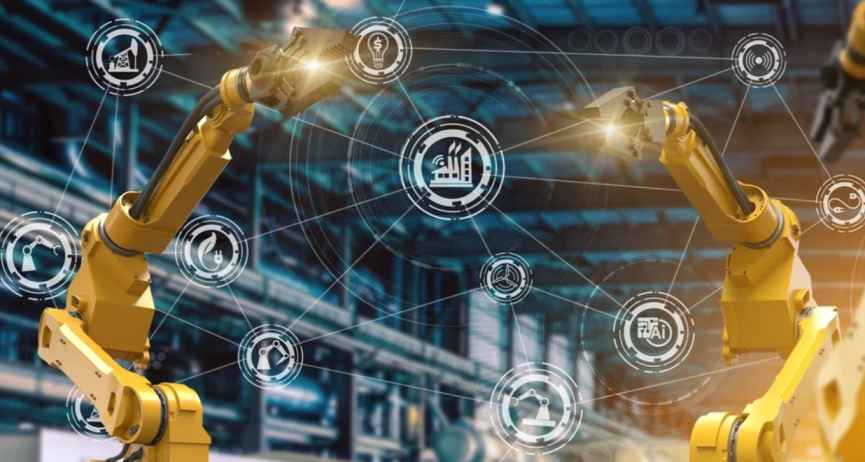In the ever-evolving landscape of industrial technology, the Internet of Things (IoT) has emerged as a transformative force, reshaping traditional processes such as Motor Control Centers and enabling efficiencies previously deemed unattainable. By integrating IoT, these critical hubs of motor function can now achieve enhanced monitoring and control, revolutionizing how industries manage and optimize their motor-driven operations.
This article delves into the myriad ways IoT technology is enhancing industrial operations, offering insights into its implementation, benefits, and the future it is steering towards.
The Foundation of IoT in Industry
IoT refers to the network of interconnected devices that communicate and share data through the internet. In industrial settings, this encompasses a wide array of sensors, machines, and gadgets that collect and analyze data to optimize processes.
The foundational principle of IoT in the industry—or Industrial IoT (IIoT)—is to harness machine-generated data in real-time, thus enhancing decision-making and operational efficiency.
Enhancing Operational Efficiency
One of the primary benefits of IoT in industrial contexts is its ability to streamline operations. Sensors can predict equipment failures before they occur, minimizing downtime and maintenance costs.
For example, in the manufacturing sector, IoT devices monitor the condition of machinery and alert managers when parts need replacement, ensuring continuous production without unexpected interruptions.
Energy Management and Sustainability
IoT also plays a crucial role in energy management by providing detailed insights into energy usage patterns. Smart sensors can adjust the operation of machines based on real-time energy demand and supply scenarios, significantly reducing energy consumption and costs.
Moreover, IoT’s ability to enhance energy efficiency contributes to the broader goals of environmental sustainability, aligning industrial practices with green policies.
Improving Worker Safety
Enhanced safety is another significant advantage brought about by IoT in industrial environments. Wearable IoT devices can monitor workers’ health indicators and environmental conditions to prevent accidents and injuries.
For instance, sensors embedded in workers’ clothing can detect hazardous gases or extreme temperatures, triggering alarms to evacuate or rectify the situation.
Quality Control and Assurance
IoT technology also elevates standards of quality control in manufacturing processes. Sensors and cameras continuously inspect products on assembly lines to identify defects.
This real-time monitoring ensures that only products meeting strict quality standards reach the market, thereby reducing waste and increasing customer satisfaction.
Supply Chain Optimization
IoT enhances transparency and efficiency in supply chain management. GPS and RFID technologies enable companies to track the real-time location of goods, from production to delivery, minimizing delays and improving logistics planning.
This level of transparency is crucial for industries dependent on just-in-time manufacturing processes, where timely delivery of components is essential.
Data-Driven Decision Making
The integration of IoT devices generates vast amounts of data that, when analyzed, offer profound insights into operational efficiencies, customer preferences, and market trends. This data-driven approach enables businesses to make informed decisions that align closely with market demands and operational capabilities.
Integrating IoT with Big Data and AI
The convergence of IoT with big data analytics and artificial intelligence (AI) marks a significant leap in industrial capability. IoT devices collect an immense volume of data from industrial operations, which big data platforms can analyze to extract actionable insights. AI algorithms can predict outcomes based on this data, leading to proactive adjustments that preemptively address potential issues before they escalate.
For instance, in the oil and gas industry, IoT sensors collect data from drills and pipelines, which AI systems analyze to predict equipment malfunctions or potential leaks. Such integration not only enhances efficiency but also mitigates risks, ensuring operational continuity and environmental protection.
Also Read: How IoT Technology is Reshaping the Construction Industry
Challenges and Considerations
Despite its benefits, the implementation of IoT in industrial processes is not without challenges. Issues such as data security, privacy concerns, and the need for substantial initial investment in IoT infrastructure are significant hurdles.
Moreover, there is a continuous requirement for upskilling employees to handle new IoT-based technologies efficiently.
The Future of IoT in Industry
Looking forward, the scope of IoT in industrial applications is poised for expansive growth. Innovations such as 5G technology will further enhance IoT capabilities through faster, more reliable connections.
Additionally, the integration of artificial intelligence with IoT is set to create smarter systems that not only gather data but also learn from it, thereby optimizing processes to unprecedented levels.
Conclusion
The Internet of Things is not just altering industrial processes; it’s redefining them. By integrating IoT, industries, including those served by a leading Control Panel Manufacturer in Texas, are achieving greater efficiency, enhanced safety, and reduced costs, all while bolstering sustainability. This regional integration underscores the significant role localized manufacturing plays in advancing technological adoption.
As technology progresses, IoT’s role in the industry will only deepen, making its understanding and adoption essential for any business aiming to thrive in the digital era.



8 thoughts on “How is the Internet of Things (IoT) Enhancing Industrial Processes?”